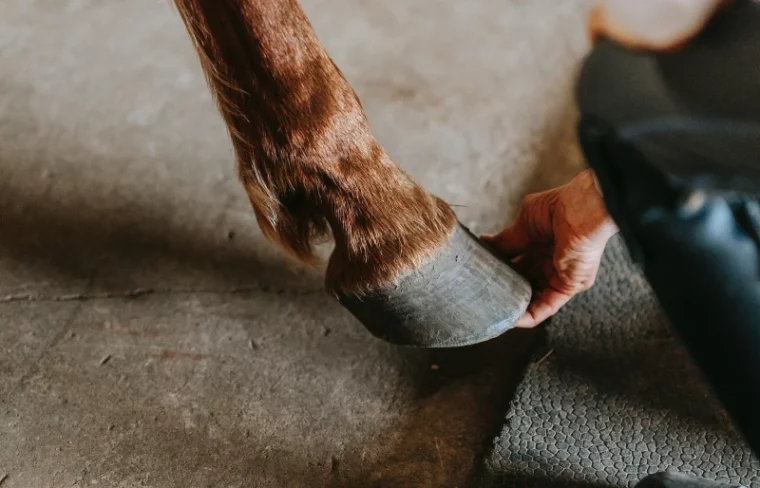
Click to Skip Ahead
Overgrown hooves can be very problematic and painful for our beloved equine companions. This problem is common among horses that have suffered from neglect and restoring hoof health is essential for their overall wellbeing.
In this article we’ll dig deeper into the details of overgrown horse hooves and how to best handle a horse whose feet have been left unattended.
What Is an Overgrown Horse Hoof?
A horse’s hooves are essentially nails and will grow continuously throughout their life. In the wild, the hooves will naturally be worn down as they roam freely across long distances. Since our domesticated horses have been removed from their natural existence, their hooves do not wear down as easily and can quickly become overgrown.
If a horse’s hooves are not maintained regularly through cleaning and trimming, the overgrowth of the hooves will cause imbalance, pain and discomfort, and can affect the body and mobility in many ways. Overgrown hooves that are left untreated can severely impact the musculoskeletal system and may eventually lead to long-term or even permanent damage.
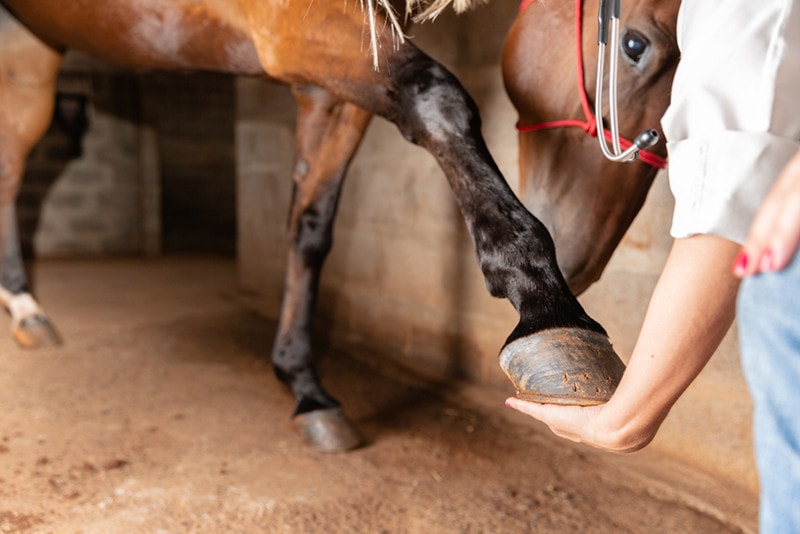
Extended Nails
Extended nails occur when the horse’s hoof continues to grow without breaking. This will result in growth that continues to the outside, resulting in enlarged and irregularly shaped hooves. Horses with extended nails will be more likely to trip, step on themselves, and begin overreaching. If left untreated, this can result in injury, swelling, and buildup of scar tissue.
Flares
As the name already suggests, a flare occurs when the hooves become overgrown to the point where they begin to flare or extend out to the sides. This affects the laminae, which is a delicate structure that keeps the nail and hoof capsule attached to the inside of the hoof. Flaring is incredibly painful, as it is equivalent to a nail bed being ripped away while always bearing several hundred to over a thousand pounds of weight.
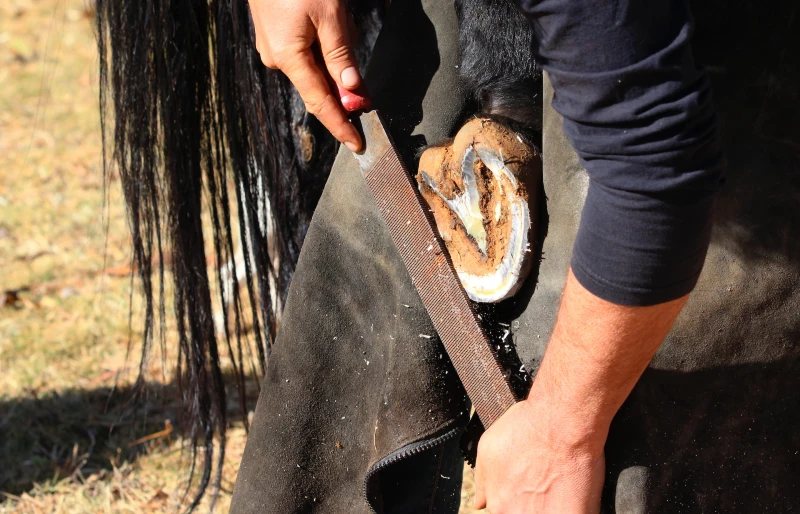
Nail & Quarter Breaking
If the hoof is left overgrown for too long, the surface may begin to break. Breaks may occur evenly or irregularly. If a break reaches the white line, which is an incredibly sensitive part of the hoof that separates the inner area from the hoof wall, it can result in bacteria entering the hoof. If this happens, it can lead to infection and a condition known as white line disease.
What Are the Signs of Overgrown Horse Hooves?
Overgrown hooves will vary in severity depending on the case at hand. In some cases, it may be harder for the untrained eye to tell whether it is a case of overgrowth, while other cases will be unmistakable. Regardless of whether you are a new or experienced horse owner, it is important to understand the horse’s anatomy and how to tell if their hooves are healthy and balanced. Here are some signs that the hooves are overgrown.
Visible Breaking
Hooves may show visible signs of breakage including splitting edges, broken sections of the hoof, and even irregular shaping. If you notice any breakage or elongated or irregular shaping of the hooves, it’s time to contact your farrier.
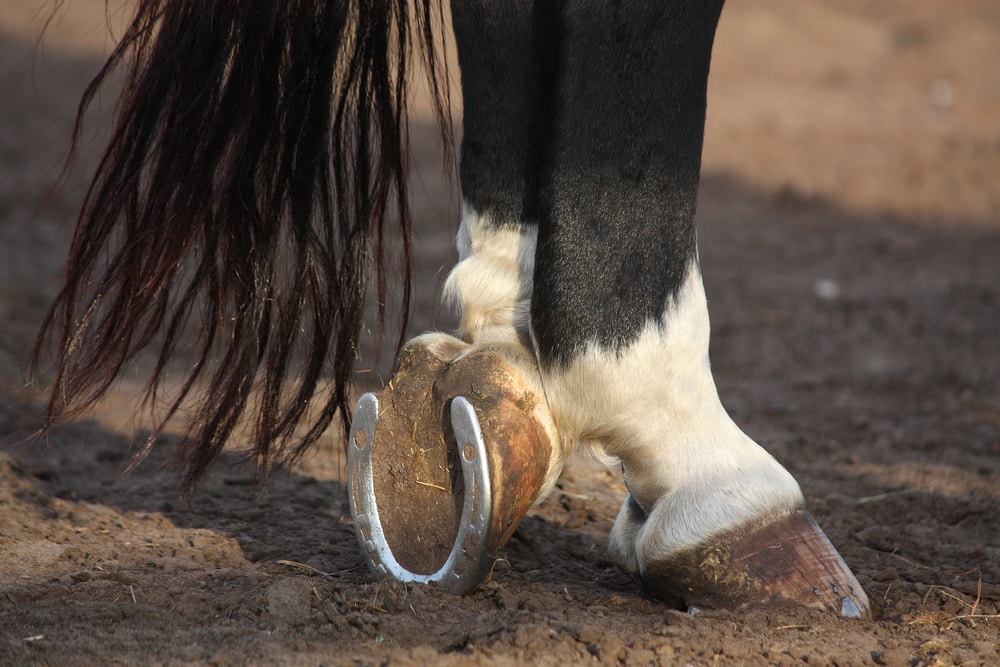
Vertical Cracks in the Hoof
A split hoof capsule will have a vertical crack that runs up from the base of the hoof. This needs to be treated promptly to prevent the crack from reaching the coronary band. Additionally, the higher a crack reaches, the longer it will take to grow back out and allow it to fully heal.
Thickening of the Bottom Hoof Edge
In some cases, the bottom of the hoof edge may be thicker than the top and from the side, the hoof will appear concave. This can be confirmed by placing a ruler from the edge of the coronary band (where the hair meets the hoof) to the bottom of the hoof to see if there is a gap under the ruler, a telltale sign of overgrowth.
Knocking Sounds
Horses often knock their front hooves with their back hooves when they walk if their hooves are overgrown. When you examine your horse’s legs, there may be signs of consistent knocking and in moderate to severe cases, there may even be scarring on the front heel bulbs.
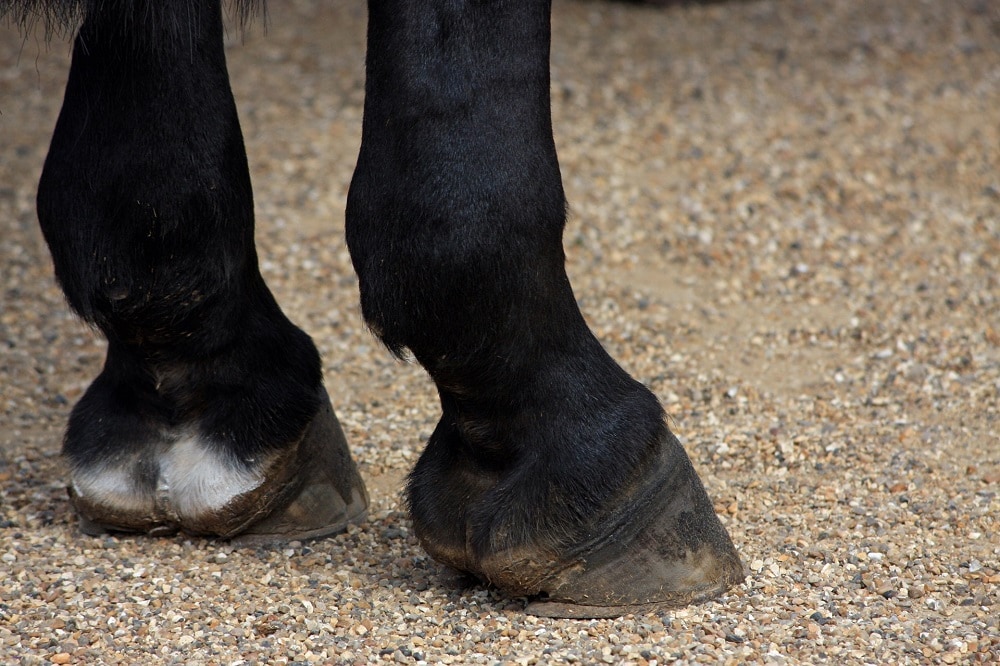
Hoof Sensitivity
Hooves can become very sensitive when overgrown. This can either be the result of the pain associated with the overgrowth itself or if it has progressed to infection within the hoof. If your horse is taking short strides, has a stiff gait, is reluctant to have its feet touched, or refuses to jump, step into a trailer, or perform normal activities, this could indicate their hooves are feeling sensitive and painful.
Foul Smelling Hooves
A fungal or bacterial infection of the soft tissue within the hoof can cause a very foul smell. It’s very easy to tell the difference between this rotten smell and that of manure, bedding, or mud that they are often stepping on. If a foul smell is emitting from the hooves, it’s time to contact your veterinarian.
What Are the Causes of Overgrown Hooves?
A horse will need regular hoof trimming every 6 to 8 weeks to maintain proper hoof health and to prevent overgrowth. If hooves become overgrown, it is often due to irregular hoof maintenance or neglect. Nutrition, health, and certain environmental factors can play a role in the speed of growth and hoof health including temperature, humidity, and exposure to moisture and bacteria.
Overall if a horse owner is doing their due diligence in maintaining daily hoof cleaning, regular farrier work, and ensuring their horse is kept in proper conditions, it’s much easier to prevent hoof problems.
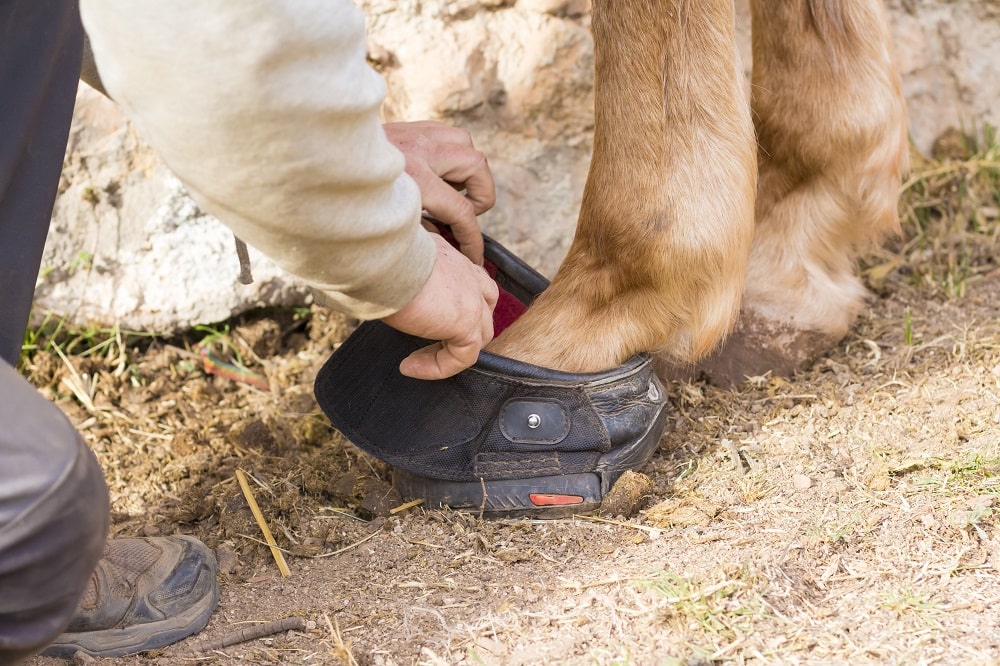
How Do I Care for a Horse With Overgrown Hooves?
If you are in care of a horse with overgrown hooves, you will need to contact a farrier right away. Do not try to trim the hooves yourself, especially if you are inexperienced, as this could cause more harm than good. The farrier will be able to assess your horse’s hoof condition and make the appropriate recommendations for trimming and care moving forward.
In more severe cases, you may need to have both the veterinarian and a farrier pay you a visit. Veterinary care is warranted if there are any signs of injury, trauma, lameness, abscess, or infection. You want to ensure that any health ailments are addressed and treated properly so that your horse can be rid of the pain and discomfort and long-term damage can be prevented.
Once your horse has been evaluated and the hooves have been trimmed, follow the instructions of your farrier and/or veterinarian as they go through the healing process. Schedule any necessary follow up exams and the next farrier visit.
FAQ
How Do I Prevent My Horses’ Hooves from Becoming Overgrown?
Preventing overgrowth is key to maintaining your horse’s hoof health. If you bring home a horse with overgrown hooves, have the farrier come out as soon as possible to get you on the right track. Otherwise, make sure that you keep up with regular hoof trimming, which should take place every 6 to 8 weeks.
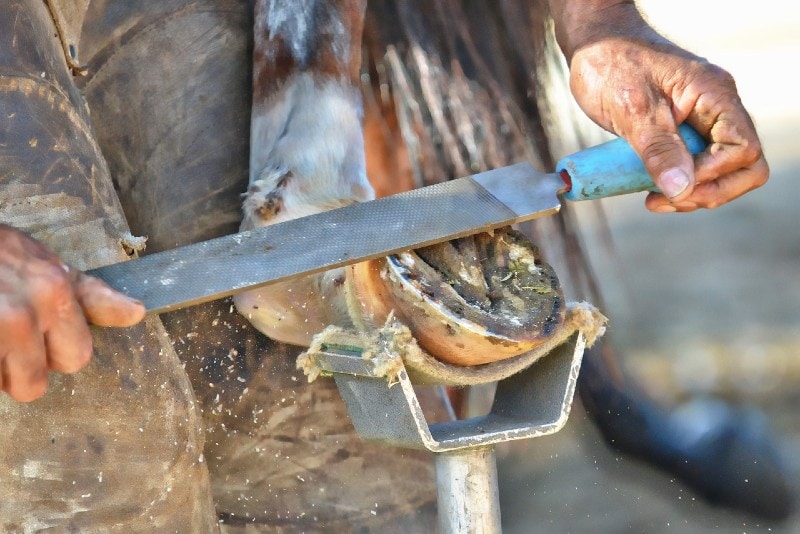
How Can I Tell If My Horse Needs Shoes?
Horses with any physical or conformation defects that result in unnatural movement often do best with additional support from shoeing. Additionally, those with arthritis, laminitis, and ringbone typically need shoes.
Some horses may have weak hoof walls or very sensitive soles that can often benefit from horseshoes. The same goes for horses involved in equine sports, as shoes provide protection from damage and wear associated with the various surfaces.
The best way to determine whether your horse needs shoes or not is to ask your farrier. They will be able to give you the best recommendations considering your horse’s hoof condition and lifestyle.
Can I Trim My Horses Hooves Myself?
Some horse owners will choose to maintain their horse’s hooves by trimming them on their own. This does require knowledge of the hoof anatomy, how to properly balance the hooves, and ensure the trim is done correctly. If you are inexperienced, it’s best to have a farrier to the job and consider taking a course or learning from a professional if it is something you would like to do yourself in the future.
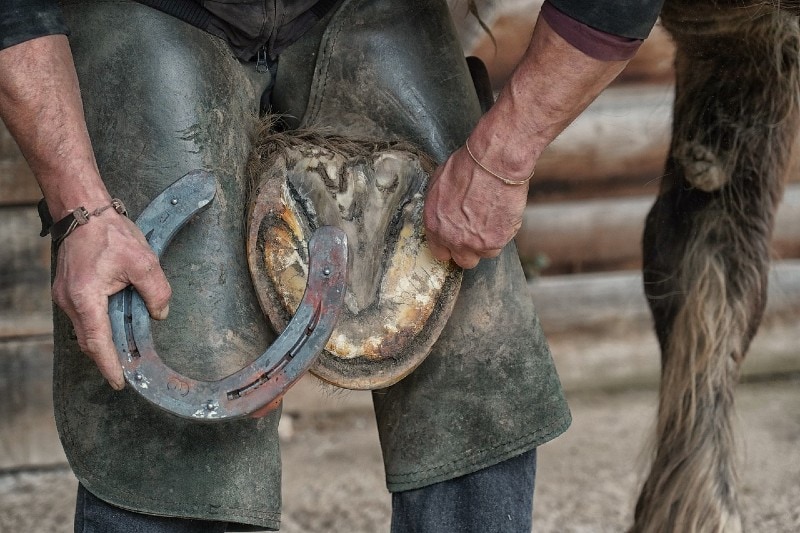
How Much Does a Farrier Cost?
Farrier pricing can vary depending on several factors including location, hoof condition, and whether the horse is being shod or not. For the most part, farrier work costs between $50 and $150 per horse but it can reach upwards of $200 in some cases of shoeing.
Conclusion
Healthy hooves are important for your horse’s overall health and daily hoof cleaning and regular hoof trimming is an essential part of a horse’s care. Overgrown hooves can easily occur if hoof care is neglected and can be very painful and problematic for the horse.
Allowing overgrowth can cause mobility problems, infection, and long-term damage. Make sure you have your horse’s hooves trimmed every 6 to 8 weeks and never hesitate to contact your farrier or veterinarian if you have any questions.
Featured Image Credit: Barbara Olsen , Pexels









